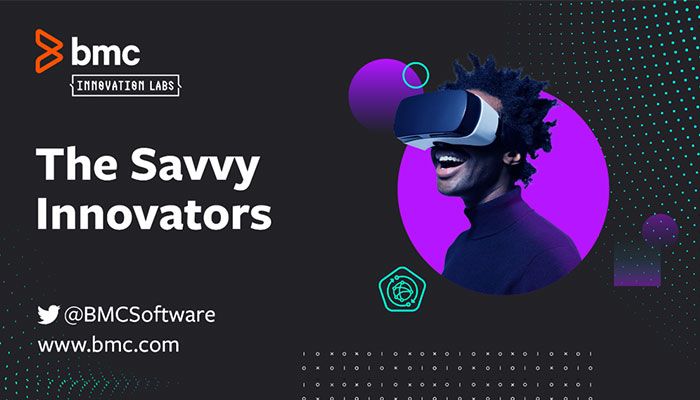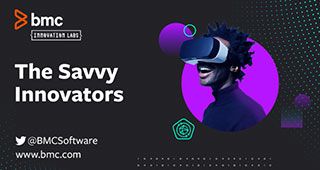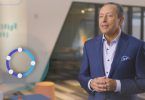In 2015, UN Secretary-General Ban Ki-Moon called on young people around the world to “Be a global citizen. Act with passion and compassion. Help us make this world safer and more sustainable today and for the generations that will follow us. That is our moral responsibility.” As a new generation rises into the enterprise workforce, they’re taking that mission to heart. What does the new emphasis on corporate social responsibility (CSR) mean to them, and what does it mean to the companies they’ll join? How can organizations maximize their triple bottom line (TBL) of people, planet, and profit?
In a new episode of The Savvy Innovators, a Voice of America podcast series sponsored by BMC, leaders in the global CSR movement explore its evolution as a collective purpose shared by employees, customers, partners, and their communities. Wendy Rentschler, Head of Global Corporate Social Responsibility & Inclusion at BMC, and Nathaniel Comer, Founder of Sun Screen IT Foundation Charity and CEO of Sun Screen IT Ltd, offered key insights for organizations seeking to do good while doing well. Highlights of their conversation follow.
Redefining the workforce
While concepts like CSR; TBL accounting; environmental, social, and governance (ESG); and diversity, equity, and inclusion (DEI) have been percolating for many years, they’ve only recently risen to prominence on the corporate agenda—and the priority list of both employees and consumers. “ESG has been on the radar for 20 years now, but only really innovative people saw that Millenials and Generation Z, the biggest buyers of products today, were really going to be purpose-driven,” says Wendy. Employees are also the largest investment for most businesses, making it especially important to align corporate culture with their values and expectations.
This isn’t just a matter of feel-good PR, emphasizes Nathaniel. “We say, ‘Let’s save the planet,’ but the planet’s going to be fine. We’re saving ourselves from an incredibly painful, fast set of changes.” The disproportionate effect of these changes highlights the growing intersectionality across all of these objectives.
“When you take a step back, historically excluded communities are the most adversely impacted from climate change,” Wendy points out. “What we’re trying to do is bring these communities to the table and have inclusive conversations and create belonging so we can prioritize inclusion to drive innovation.” In this sense, economic investment, empowerment, and upskilling need to go hand-in-hand. As Nathaniel says, “When you educate a woman, you educate the family.” Over time, a community can build the kind of IT skills that draw new investment, help it rise out of poverty, and achieve higher levels of prosperity, development, and autonomy.
From e-waste to urban mining and grassroots carbon reduction
The global economy already generates truly vast volumes of electronic and electrical waste each year—and it’s expected to double by mid-century. But it doesn’t have to be that way.
“In 1985, hardly anyone had a PC in their house,” says Nathaniel. “Now you’ve got a Bluetooth fridge that tells you when you’re low on milk. This over-engineered world we live in is marvelous, but it’s a little over the top.” With mines for copper, platinum, and other raw materials projected to be exhausted in the coming decades, we’ll need to turn our attention to the billions of dollars’ worth of mineral resources already lying dormant in landfills, attics, basements, and back offices.
“There’s already enough metal out there to have a completely sustainable circular economy,” says Nathaniel. “What we haven’t transitioned to is how to get those metals and identify them in the first place.” His organization is currently working with innovators who are developing ways to extract gold and other elements from discarded circuit boards. Even without such heroic measures, simply getting more use out of existing tech can have a tremendous impact. “A third of the IT Industry’s carbon footprint is end user computing. If you extend the life of a PC by just two years, it saves nearly 200 kilograms of carbon,” he adds.
The grassroots will have an essential role to play in the shift to a circular economy, says Wendy. “Empowering people to understand the power of their consumerism can help make these changes. We’re already seeing it in the ESG movement that’s happening now. This would not be a thing if the market wasn’t dictating it.”
Employees can play a similar forcing function in the workplace. “Our talent acquisition team and every hiring manager I talk to tell me that candidates are asking about DEI and sustainability in every interview,” reports Wendy. “They want to know if you are a purpose-driven organization.” Meeting that expectation is becoming critical to building an organization’s human capital. “Your ability to retain your team members is extremely important. If you have high turnover, you’re not able to engage your employees. That lowers your ESG score and puts you more at risk of being overtaken by a more innovative competitor.”
Sustainability drives, volunteer days, and other employee initiatives can pay dividends for both the community and the business. As Nathaniel puts it, “Your business will have an advantage if you’re getting your people to be inspired and work in ways that they would never normally do in a really human organic way.”
Accountability—not greenwashing
“Everyone’s heard the term ‘greenwashing’ now,” says Nathaniel. “There’s this massive startup industry of sustainability ratings. But reporting has to be transparent.” This includes a willingness to acknowledge where you’re falling short, not just hyping your successes. “No big company is ever going to have no issues. There are going to be mistakes made along the way, but on the whole, there’s a wonderful trend in actually being really accountable and disclosing complete transparency. It’s all out there, and it’s very quick to see which company is actually telling the truth with demonstrable statistics.”
Wendy points to tried-and-true best practices and frameworks such as EcoVadis, Sustainalytics, and The Carbon Disclosure Project (CDP) as the best way to approach ESG reporting. “The industry as a whole is going through a maturity model. Everyone’s always doing a new thing, but stick to the people that have been doing it for a very long time.”
To hear more of Wendy and Nathaniel’s conversation, including the role of employee resource groups (ERGs), the global benefits of increased access to education, and examples of companies and practices at the forefront of CSR, listen to the whole podcast here: “Changing the Game through Corporate Social Responsibility.”







